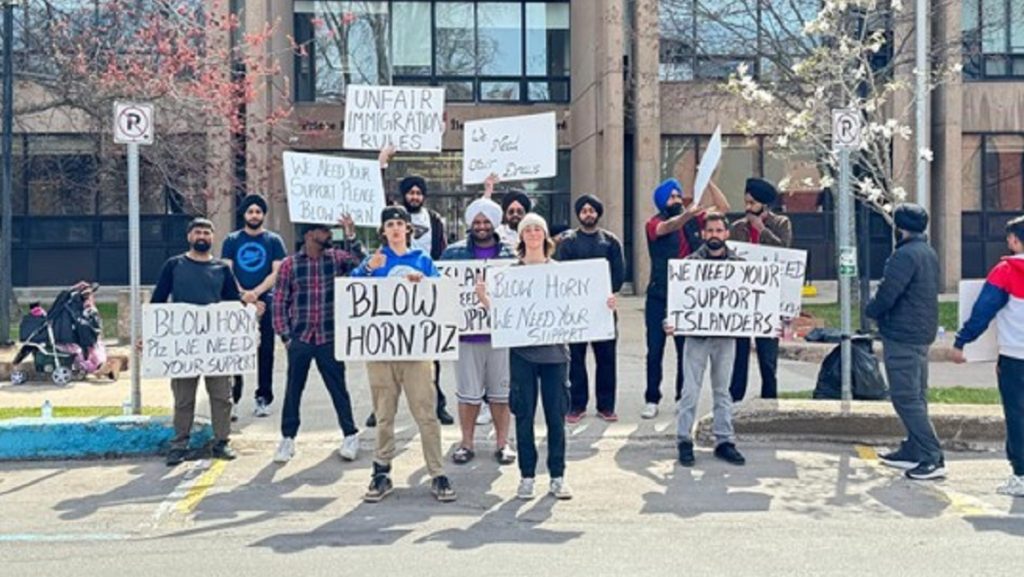Ontario’s Chief Coroner to launch inquest into death of 4-year-old girl likely killed by father
Posted February 9, 2023 2:02 pm.
Last Updated February 23, 2024 9:22 am.
On the third anniversary of the death of four-year-old Keira Kagan, whom an expert committee has said was likely killed by her father, the Chief Coroner has announced there will be an inquest into her death.
Kagan was found dead alongside her father, Robin Brown, at the bottom of a cliff in Milton’s Rattlesnake Point Conservation Area in February 2020. Her mother, Jennifer Kagan, had been warning of the danger her ex-husband posed for years, but no one listened until it was too late.
The inquest into her death will examine the failures of the system that didn’t protect her.
“It’s been very hard for us,” Kagan told CityNews. “I’m glad the coroner is calling an inquest, it’s a matter of high public importance. We certainly will participate in that process.”
As CityNews first reported Wednesday, a report from the Domestic Violence Death Review Committee, ordered by the coroner, concluded that Brown exhibited at least 22 risk factors of intimate partner homicide. If there are seven, the committee considers a death to be “predictable and preventable.”
For years, no one in the court system seemed to recognize or understand the danger. “The optics are that it’s about the children, but it’s not about the kids,” said Kagan.
Keira’s stepfather, Phillip Viater, who is a family law lawyer, believes Keira wasn’t protected from her father because courts focus on giving parents 50/50 custody.
“There needs to be a culture shift in our court system. Right now, it is too pro-contact at all costs,” said Viater.
RELATED STORY: Report finds Ontario child’s likely murder was ‘predictable and preventable’
During a three-year custody dispute, Kagan had repeatedly told the courts her ex-husband posed a threat, due to abuse in the marriage.
Yet, the judge ruled it was not relevant and gave Brown 50 percent custody. “Assuming the validity of all the allegations, I am of the view that there is no risk to Keira,” the judge ruled.
Pamela Cross, a lawyer and advocate for abused women, tells CityNews Kagan’s experience is not isolated.
“I can tell you thousands of mothers are going through a court system confronting the very same problems,” Cross said.
Domestic violence common in cases at family court
In a 2016 Canadian survey, family law judges reported domestic violence was an issue in 25 per cent of their cases. However, not all cases with domestic violence are not identified properly.
The report for the coroner found Keira’s custody case seemed to be designated as “parental conflict” instead of domestic violence. As a result, the “severity of risk” was not identified until days before Keira died.
“You have this culture where these cases are coded as conflict despite a high percentage of them being domestic violence cases. You have lawyers relying on tropes, such as ‘two combatants in war,’” explained Kagan. “Add on to that oftentimes women are not believed when they come forward.”
“There’s a lot of systemic misogyny and it’s hugely problematic and dangerous,” she added.
A 2020 U.S. study that reviewed 10 years’ worth of cases involving abuse and alienation claims found courts “frequently react to mothers’ claims of paternal abuse – particularly child abuse – with hostility and criticism,” because “the court did not believe them.”
Kagan ended the marriage after two and a half years, when Keira was eight months old. During the lengthy custody dispute that followed, she testified that Brown was not only physically abusive toward her, but he also displayed severe coercive control. Cross said the courts don’t fully understand what that is.
“It’s not like someone showing up with broken arm or black eye, it’s emotional, psychological, gaslighting, social isolation. It’s a pattern of behaviour over time that gives the power to the abusive partner,” she explained.
“Until lawyers, judges and everybody else in the system has proper education to understand, in particular, coercive control, they’re not going to be able to apply the law as well as they should.”
In Canada, about 30 children are killed by a parent every year. Sixty per cent of those murders are committed by fathers and 40 per cent by mothers.
Cross said in cases involving fathers, the motive is usually revenge. In cases with mothers, there is often an underlying mental illness. In most cases, the warning signs were there.
“While mothers do, sometimes, kill their children, this more often happens in the context of severe mental health issues, including post-partum depression. When fathers kill their children, which is more common, it is almost always in the context of intimate partner abuse,” explained Cross.
“The killing of children may follow months or years of threats to do that; threats that are not always taken seriously by the systems to which women turn, as the death of Keira Kagan illustrates. Killing a child is the worst form of abuse to which a woman can be subjected,” she added.
The inquest into Keira’s death may not begin until 2025, which would be about five years after her death.
“It’s absolutely horrific,” shared Kagan about losing her daughter. “All the milestones that your child is not there for. All the new seasons and new beginnings that your child is not starting. All the growth that your child would’ve had.”
With files from Meredith Bond and Jessica Bruno








